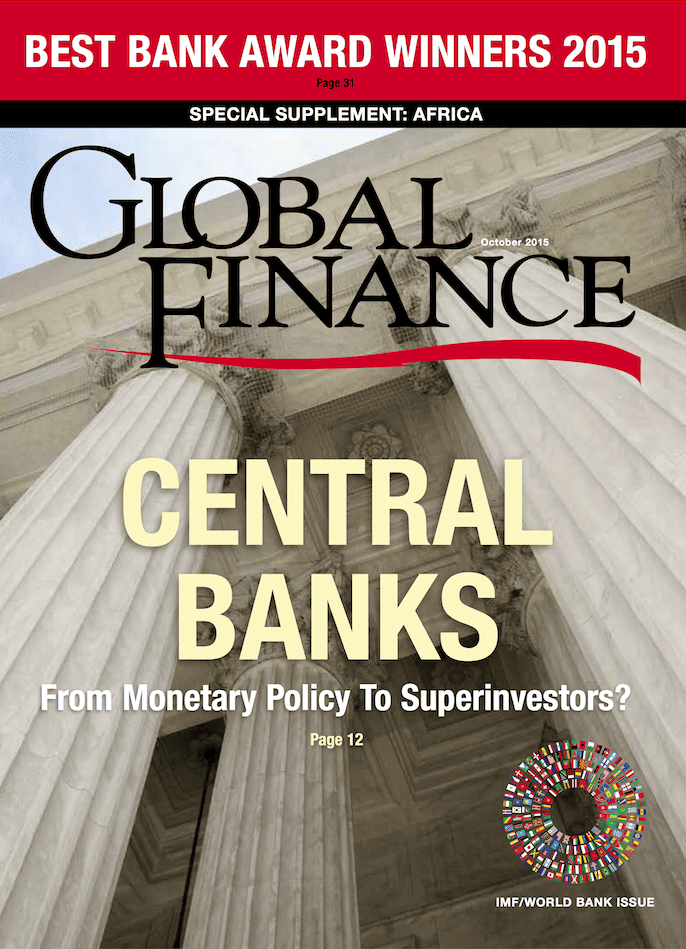After a summer of heavy turbulence in global financial markets, the new season starts with the seemingly endless story of when the Federal Reserve Board will raise interest rates. Although the Fed put off the move in September, the US central bank will up rates eventually, most likely at its next meeting in December. The hike will undoubtedly force some countries to shift monetary policies.
OCTOBER 2015 | VOL. 29 NO. 9

This month our cover story looks at central banks and, in particular, how these influential policymakers have dramatically changed their tactics to steady shaky economies. Perhaps the biggest shift: Institutions like the Federal Reserve and European Central Bank have morphed into superinvestors—a far cry from their traditional roles.
Of course, new problems require new solutions. The rising influence of China on the world stage, for one, has rewritten economic models. In recent months, uncertainty over the economic condition of the People’s Republic and its future monetary policy has rattled markets.
Such global uncertainty might explain the timing of the recent downgrade of the sovereign rating of Brazil to below investment grade. And in August, emerging markets saw outflows of some $40 billion dollars from equities and bonds, according to data from the Institute of International Finance. “Emerging and frontier market economies may hope for the best during the upcoming tightening cycle,” commented the World Bank’s Carlos Arteta, “but given the substantial risk involved, they would do well to buckle their seatbelts in case the ride gets bumpy.”
These potential shock waves have dominated the debate in the months preceding the annual meetings of the IMF and World Bank in Lima, Peru. It will certainly be at the center of the public and private debate at the gathering.
Thus, in this issue we present our annual report cards for central bankers worldwide. Of note, the number of governors who deserved the highest grades increased from last year. It’s a small group, but one consisting of central bankers from developing as well as developed nations. The results confirm our belief that central bankers are changing with the times, devising innovative strategies to combat the new realities of the global economy.

Andrea Fiano | Editor
afiano@gfmag.com



